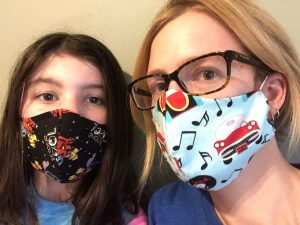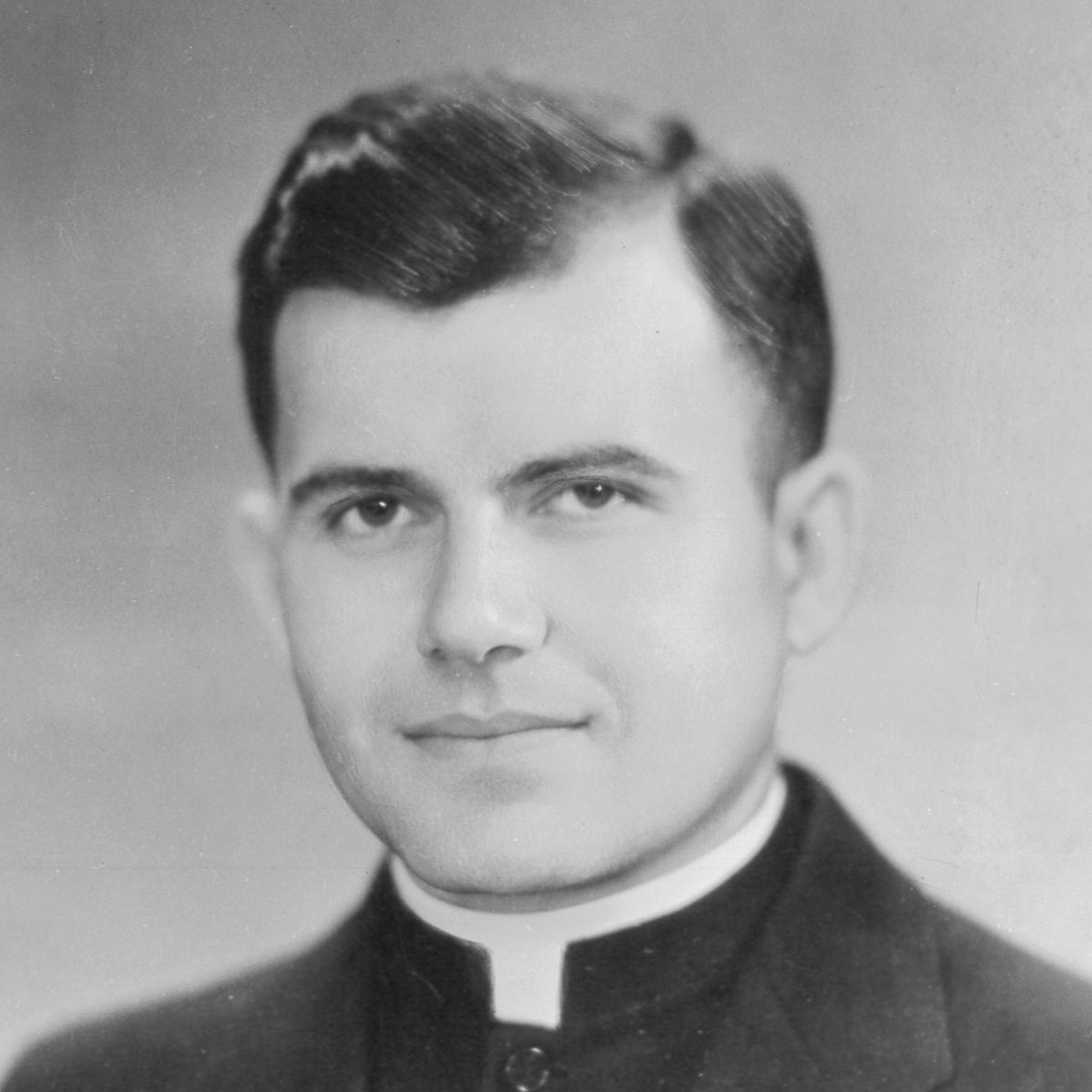Scecina designer has a hand in providing coronavirus protection

Scecina graphic designer Mandy Crandell (right) and daughter Anna model the protective masks Mandy has been making at home.
By Beth Murphy, Director of Marketing Communications
People are fighting the coronavirus pandemic on many levels.
Mandy Crandell is using her sewing machine.
Crandell is Scecina’s graphic designer and publications coordinator. Before coronavirus, she was using her sewing skills to make custom dolls in her home business, Something Monumental.
She saw a recent Forbes magazine article about homemade personal protection equipment (PPE) for health-care workers on the front lines of fighting the pandemic. With extra fabric from her other sewing projects, she started making the protective masks.
“They will be donated to health-care workers who have requested them and some assisted living facilities,” she said. “I’ve completed 13 masks so far. I will make as many as I can until I run out of fabric.”
She’s not alone. Throughout the country, people are turning to the sewing machine to help.
Indianapolis TV station WXIN-59 featured “Hoosiers help with protective mask shortage by making them at home.” The station reported that members of the Black Hat Society of Irvington are sewing masks for Community East Hospital. Community Health Network said it has a plentiful supply but always likes to be stocked up.
According to the report, there are two kinds of masks: medical, which in the COVID-19 case are N-95 masks, and barrier masks. The latter is for instances where coronavirus isn’t present. The homemade masks Crandell and others are sewing are barrier masks. They allow health-care workers to use the surgical masks for the COVID-19 cases.
“The Forbes article included links to patterns as well as a site with the best materials to use for homemade masks,” said Crandell. “These masks are not as effective as a surgical mask, but with the current shortage, a homemade mask is one of the next best options. Cotton is 70% effective against 1-micron particles.”
Crandell said it takes about 20-30 minutes to sew a mask.
“The first test mask took quite a while as I am more experienced with hand-sewing than a sewing machine,” she said.
She uses two layers of 100% cotton and will use flannel material once she runs out of the cotton.
Got a sewing machine? Crandell encourages you to join her in this monumental battle against a dangerous disease.
“Please help make masks if you are able to sew!” she said.
Check out Crandell’s Something Monumental Facebook page for some more information.

